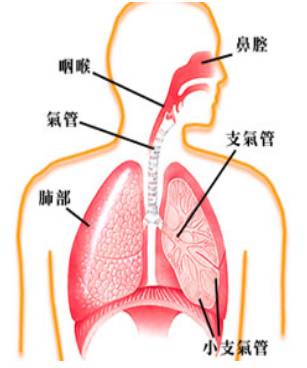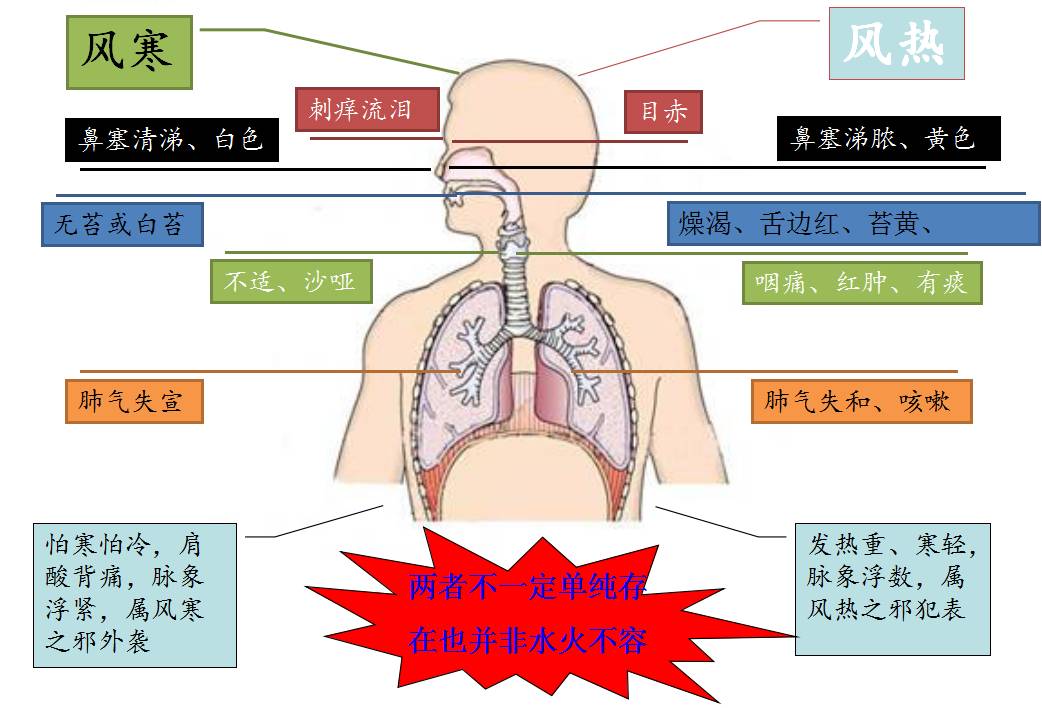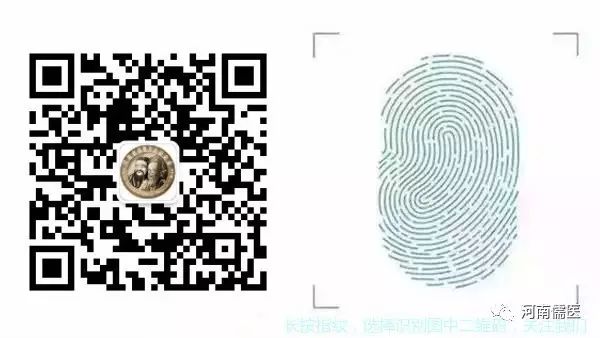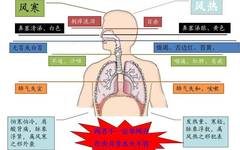Common Cold
One of the most common diseases


Understanding the Common Cold

The common cold, commonly known as “wind cold” (shangfeng), is an external pathogenic disease caused by the invasion of wind evil or seasonal viruses, leading to dysfunction of the lung’s defensive Qi (wei qi), with main clinical manifestations including nasal congestion, runny nose, sneezing, headache, chills, fever, and general malaise. The organs involved generally include the nasal cavity and throat. In Traditional Chinese Medicine (TCM), the common cold is classified into four types: wind-cold type (fenghan), wind-heat type (fengre), deficiency type (tixu), and seasonal flu (liuxing xing ganmao). Today, we will mainly explore the wind-cold and wind-heat types of the common cold!


Understanding Wind-Cold and Wind-Heat Colds
Overview of Wind-Cold Type Cold:This condition arises due to sudden climate changes, imbalance of cold and warm temperatures, and excessive fatigue, compounded by the invasion of wind-heat external pathogens, or dampness, or seasonal viruses, leading to disharmony of the defensive Qi and dysfunction of the lung’s dispersing and descending functions.
Overview of Wind-Heat Type Cold: Wind-heat cold is caused by the invasion of wind-heat evil, leading to disharmony of lung Qi. Symptoms include high fever, slight aversion to wind, headache, sweating, red and swollen throat, cough with sticky or yellow phlegm, nasal congestion with yellow discharge, thirst, red tongue edges, and thin white or slightly yellow coating.

How to Differentiate Between Wind-Cold and Wind-Heat Colds?
Is there a sore throat?Generally, in wind-cold colds, there is no sore throat, just a dry cough without redness or swelling; if there is significant throat pain with redness and swelling, it indicates a wind-heat cold.
Regarding nasal discharge:When having a cold, there is usually nasal discharge; if it is clear, it indicates a wind-cold cold; if the discharge is thick and yellow, it indicates a wind-heat cold. Note that sometimes, it may start as clear discharge and later turn yellow, indicating inflammation.
Is there dry mouth?If there is no dry mouth during the cold, it indicates a wind-cold cold; if there is dry mouth and a constant thirst, it indicates a wind-heat cold.
Is there sweating?Generally, wind-cold colds do not produce sweat easily; whereas in wind-heat colds, there is often profuse sweating.
This is a simple way to differentiate between wind-cold and wind-heat colds.
 Detailed Explanation with Images
Detailed Explanation with Images

Wind-Cold Cold:Occurs mostly in cold seasons, such as winter, late autumn, and early spring, caused by the invasion of cold evil.
Symptoms:Light fever, severe chills, no sweating, headache, body aches, clear nasal discharge, cough, no redness or swelling in the throat, pale red tongue, floating tight pulse.
Treatment Method:Use warming and dispersing methods.
Dietary Recommendations:Consume foods that disperse cold and induce sweating. Staple foods can include congee made with scallions, spicy noodles, and tea can include ginger and brown sugar tea or ginger and perilla tea, brewed with hot water to induce sweating for recovery.
Wind-Heat Cold:Occurs mostly in warm seasons, such as spring, early summer, and early autumn, caused by the invasion of wind-heat evil.
Symptoms:High fever, slight chills, sweating or little sweating, headache, nasal congestion, sore throat, red tongue, rapid pulse.
Treatment Method:Use cooling and dispersing methods.
Dietary Recommendations:Consume foods that clear heat and detoxify. Staple foods can include mung bean congee, and vegetables can include cold mixed mung bean sprouts and winter melon soup, while fruits like watermelon, pears, and apples are also good. It is best to avoid excessive meat or other tonics.
How to Choose Medication Based on Symptoms?
No matter which type of cold, it can make one uncomfortable for several days. Some people know they have a wind-heat cold but take wind-cold medications, worsening their condition. Here, I will teach you how to distinguish between wind-cold and wind-heat medications.
Wind-Cold Medications:Often contain terms like “expel wind,” “disperse cold,” or “wind-cold.” Common ingredients in wind-cold patent medicines include Ma Huang (Ephedra), Gui Zhi (Cinnamon Twig), Xi Xin (Asarum), Qiang Huo (Notopterygium), Su Ye (Perilla Leaf), Sheng Jiang (Fresh Ginger), Jing Jie (Schizonepeta), and Fang Feng (Saposhnikovia).
Wind-Heat Medications:Often contain terms like “clear heat” or “detoxify.” Common ingredients in wind-heat medications include Jin Yin Hua (Honeysuckle), Lian Qiao (Forsythia), Ban Lan Gen (Isatis Root), Ju Hua (Chrysanthemum), Sang Ye (Mulberry Leaf), Bo He (Peppermint), Huang Qin (Scutellaria), Huang Lian (Coptis), and Da Qing Ye (Isatis Leaf).
Common Cold Medications
Western Medicines

Name:Compound Pseudoephedrine Hydrochloride Sustained-Release Capsules
Indications:Used for common cold (sneezing, nasal congestion, fever, sore throat, cough)
Ingredients:Pseudoephedrine Hydrochloride, Chlorpheniramine Maleate
Effects:Relieves nasal mucosal congestion, reduces nasal blockage

Name:Acetaminophen Pseudoephedrine Tablets
Indications:Common and seasonal flu (fever, headache, sneezing, runny nose, nasal congestion, cough)
Ingredients:Acetaminophen, Pseudoephedrine Hydrochloride, Dextromethorphan Hydrobromide
Effects:Relieves cough, reduces fever, alleviates pain, reduces nasal congestion

Name:Chlorpheniramine Tablets
Indications:Used for headaches, fever, nasal congestion, runny nose, sore throat, and excessive phlegm caused by colds
Ingredients:Sodium Diclofenac, Artificial Bile, Chlorpheniramine Maleate
Effects:Reduces fever, alleviates pain, anti-inflammatory, anti-allergic

Name:Compound Acetaminophen Zinc Tablets
Indications:Common cold or seasonal flu (nasal congestion, runny nose, fever, headache, cough, excessive phlegm)
Ingredients:Acetaminophen, Zinc Gluconate, Diphenhydramine Hydrochloride, Isatis Root Extract Powder
Effects:Reduces fever, alleviates pain, relieves cough, antiviral

Name:Compound Acetaminophen Amantadine Tablets
Indications:Cold symptoms including nasal congestion, runny nose, sneezing, sore throat, headache, fever
Ingredients:Acetaminophen, Amantadine Hydrochloride, Caffeine, Artificial Bile, Chlorpheniramine Maleate
Effects:Reduces fever, alleviates pain, antiviral, anti-allergic

Name:Phenacetin Caffeine Tablets
Indications:Cold, fever, headache, neuralgia, and rheumatic pain
Ingredients:Acetaminophen, Aminopyrine, Caffeine, Chlorpheniramine Maleate
Effects:Reduces fever, alleviates pain, anti-allergic, relieves fatigue
Common Cold Medications
Traditional Chinese Medicines
Some medications contain Western ingredients

Name:VC Yin Qiao Tablets
Indications:Expel wind and resolve the exterior, clear heat and detoxify. Used for seasonal flu caused by wind-heat, with symptoms of fever, headache, cough, dry mouth, and sore throat
Ingredients:Jin Yin Hua (Honeysuckle), Lian Qiao (Forsythia), Jing Jie (Schizonepeta), Dan Dou Chi (Fermented Soybean), Niu Bang Zi (Burdock Seed), Jie Geng (Platycodon), Bo He (Peppermint Oil), Lu Gen (Reed Rhizome), Dan Zhu Ye (Lophatherum), Gan Cao (Licorice), Vitamin C, Chlorpheniramine Maleate, Acetaminophen
Effects:Reduces fever, alleviates pain, anti-inflammatory, anti-allergic

Name:Cold Relief Tablets (Capsules)
Indications:Expel wind and resolve the exterior, clear heat and detoxify. Used for wind-heat cold, with symptoms of fever, headache, nasal congestion, runny nose, sneezing, sore throat, and body aches
Ingredients:Nan Ban Lan Gen (Isatis Root), Da Qing Ye (Isatis Leaf), Jin Zhan Yin Pan (Gold and Silver Flower), Gang Mei (Graptopetalum), Shan Zhi Ma (Sesame), Chuan Xin Lian Ye (Andrographis Leaf), Acetaminophen, Morin Hydrate, Chlorpheniramine Maleate
Effects:Reduces fever, antiviral, antibacterial, anti-inflammatory

Name:Shuang Huang Lian Oral Liquid
Indications:As a resolving exterior agent, it has the effects of expelling wind, resolving the exterior, and clearing heat and detoxifying. Used for colds caused by wind-heat, with symptoms of fever, cough, and sore throat
Ingredients:Jin Yin Hua (Honeysuckle), Huang Qin (Scutellaria), Lian Qiao (Forsythia)
Effects:Antiviral, antibacterial, anti-inflammatory

Name: Xiao Chai Hu Granules
Indications:As a harmonizing agent, it has the effects of resolving the exterior, dispersing heat, and soothing the liver and stomach. Used for external pathogenic diseases with Shaoyang syndrome, symptoms include alternating chills and fever, fullness in the chest and hypochondria, poor appetite, irritability, nausea, bitter mouth, and dry throat
Ingredients:Chai Hu (Bupleurum), Jiang Ban Xia (Pinellia), Huang Qin (Scutellaria), Dang Shen (Codonopsis)
Effects:Reduces fever, relieves cough, antibacterial

Name:Gan Mao Ling Granules
Indications:Headache, fever, nasal congestion, runny nose, sore throat caused by colds
Ingredients:San Cha Ku (Bitter Herb), Bo He (Peppermint Oil), Jin Zhan Yin Pan (Gold and Silver Flower), Wild Chrysanthemum, Gang Mei (Graptopetalum), Caffeine, Acetaminophen, Chlorpheniramine Maleate
Effects:Reduces fever, alleviates pain, relieves nasal congestion
Recommended Based on Cause
Recommended for Wind-Heat Cold:VC Yin Qiao Tablets, Cold Relief Tablets (Capsules), Shuang Huang Lian Oral Liquid, Gan Mao Ling Granules, etc.
Recommended for Wind-Cold Cold:Xiao Chai Hu Granules, Cough Relief Capsules, Wind-Cold Cold Granules, etc.
Recommended Based on Symptoms
Nasal Congestion and Runny Nose:Compound Pseudoephedrine Hydrochloride Sustained-Release Capsules, etc.
Headache:Acetaminophen Pseudoephedrine Tablets, etc.
Sore Throat:Chlorpheniramine Tablets, Compound Acetaminophen Amantadine Tablets, etc.
Fever:Compound Acetaminophen Zinc Tablets, Compound Acetaminophen Amantadine Tablets, Phenacetin Caffeine Tablets, etc.
Cough:Acetaminophen Pseudoephedrine Tablets, Compound Acetaminophen Zinc Tablets, etc.
The above is an understanding of colds, differentiation, and medication selection. Below, I summarize some preventive knowledge regarding colds, hoping that after reading this content, your understanding of colds will be enhanced!
Preventive Measures
✿ Drink plenty of water and eat more fruits to enhance metabolism
✿ Reduce visits to public places or areas with poor air quality
✿ Open windows regularly for ventilation to maintain air circulation
✿✿ Pay attention to warmth; increase physical exercise
✿✿ Soak feet in hot water, eat raw scallions
✿✿ Gargle with salt water: use light salt water to gargle after meals to eliminate oral bacteria
✿✿✿ Increase outdoor activities to enhance physical fitness
✿✿✿ During cold outbreaks, you can use aged vinegar to fumigate the room
✿✿✿ In winter, wash your face with cold water, scoop a handful of water to wash your nostrils, gently inhale a little water through the nostrils and then blow it out, repeating several times


